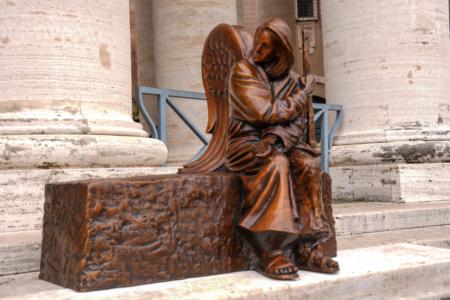A look at the president’s executive order on abortion and what it means
Before the final vote in the United States House of Representatives approving the Senate’s health reform bill on March 21, President Barak Obama announced an executive order addressing abortion. Several congressional representatives had threatened to oppose the bill unless the use of federal funds for abortion was prohibited and conscience protections were strengthened. This group decided to vote for the bill after the executive order was produced (it has yet, at the time of this writing, to be signed). What would the president’s order do?
The national organization of Democrats for Life hailed the order as “reinforce[ing] the long-standing policy against public funding of abortion” while a spokesperson for the United States Conference of Catholic Bishops, mirroring the negative assessment of other pro-life groups, told the media that attempting to fix a bill by executive order “does not begin to address the problem.” Let’s take a closer look at the president’s order to determine its actual legal impact.
The order consists of four sections but contains only two specific directives. First, the President directs the agencies charged with implementing the reform legislation to issue model guidelines for complying with the bill’s accounting mandates.
The health care reform bill requires the states to offer at least one insurance plan that includes abortion coverage. Under the bill, individuals who pay premiums for an insurance plan that includes abortion coverage will be forced to contribute at least a dollar a month to an abortion account, even if they oppose abortion. The premiums that go into the abortion account will help subsidize others who obtain abortions under the plan.
The bill requires that these mandated abortion contributions be classified as private funds, and not be mixed with federal funds. Thus bookkeeping mechanisms to segregate the funds will need to be employed. All that the president’s first directive asks for is the development of suitable steps in fund management.
The problem here is that regardless of the quality of the accounting techniques, under the bill the federal government will now endorse insurance coverage for elective abortions as a health care right at the same time it imposes a duty on individuals to contribute a specific dollar amount of their insurance premiums towards abortions.
People could avoid this mandate by choosing another plan that does not offer abortion coverage. Yet other insurance plans might not provide the same benefits that an individual needs with respect to other treatments, thus forcing that individual to enroll in a plan with the mandated abortion premiums. The president’s first directive does not fix this ethical problem.
Second, the president directs “the Secretary of HHS [Health and Human Services] to ensure that program administrators and recipients of Federal funds are aware of and comply with the limitations of abortion services imposed on CHCs [Community Health Centers] by existing law.” Objections to the inadequacy of the executive order center on this language.
The reform bill creates a new fund to help subsidize already existing community health centers and appropriates billions of new dollars over the next five years to be used in this fund. While the existing statutes that created and originally funded these community health centers contain restrictions on abortion access and funding, these restrictions specifically and expressly apply only to funds directly appropriated under the existing statutes.
The president’s executive order asserts that under the reform bill, “the Hyde Amendment language [prohibiting abortion funding for existing HHS programs] shall apply” to the newly authorized and appropriated funds. This is incorrect.
Going to the section of the reform bill that creates the new fund for the community health centers, and indeed examining the bill in its entirety, one finds absolutely no language that limits how money appropriated to that fund can be spent. Since these new subsidies were not authorized under the existing statutes that originally created the community health centers, they are not subject to the restrictions found in those statutes.
Is the President therefore directing HHS and the community health centers to prevent the new funds from being used for abortion as if the existing limits applied to the new funds? No he isn’t. Based on the carefully written language in his order, all he is directing the agencies to do is to abide by existing law. Existing law prohibits them only from using funds made available under the original statutes for abortion.
Because there are no additional restrictions in the reform bill on the funds it newly grants, the president’s order will not stop these funds from being used for abortion. To use a non-technical term, the president’s second directive is what is known as a head fake.
So, yes, in one respect, the president “reinforces” current policy by simply requiring the government to do what it is already required to do under the current Hyde Amendment. But when it comes to the new federal programs created and funded by the reform bill, the community health centers are free to use them for any purpose, including abortion access.
The United States Catholic Bishops have identified numerous problems with the newly enacted health care reform bill. Unfortunately, the president’s executive order fails to address the abortion concerns and thus allows the fundamental and disturbing changes in federal policy with respect to abortion to proceed.
Daniel Avila is the Associate Director for Policy and Research of the Massachusetts Catholic Conference.



















